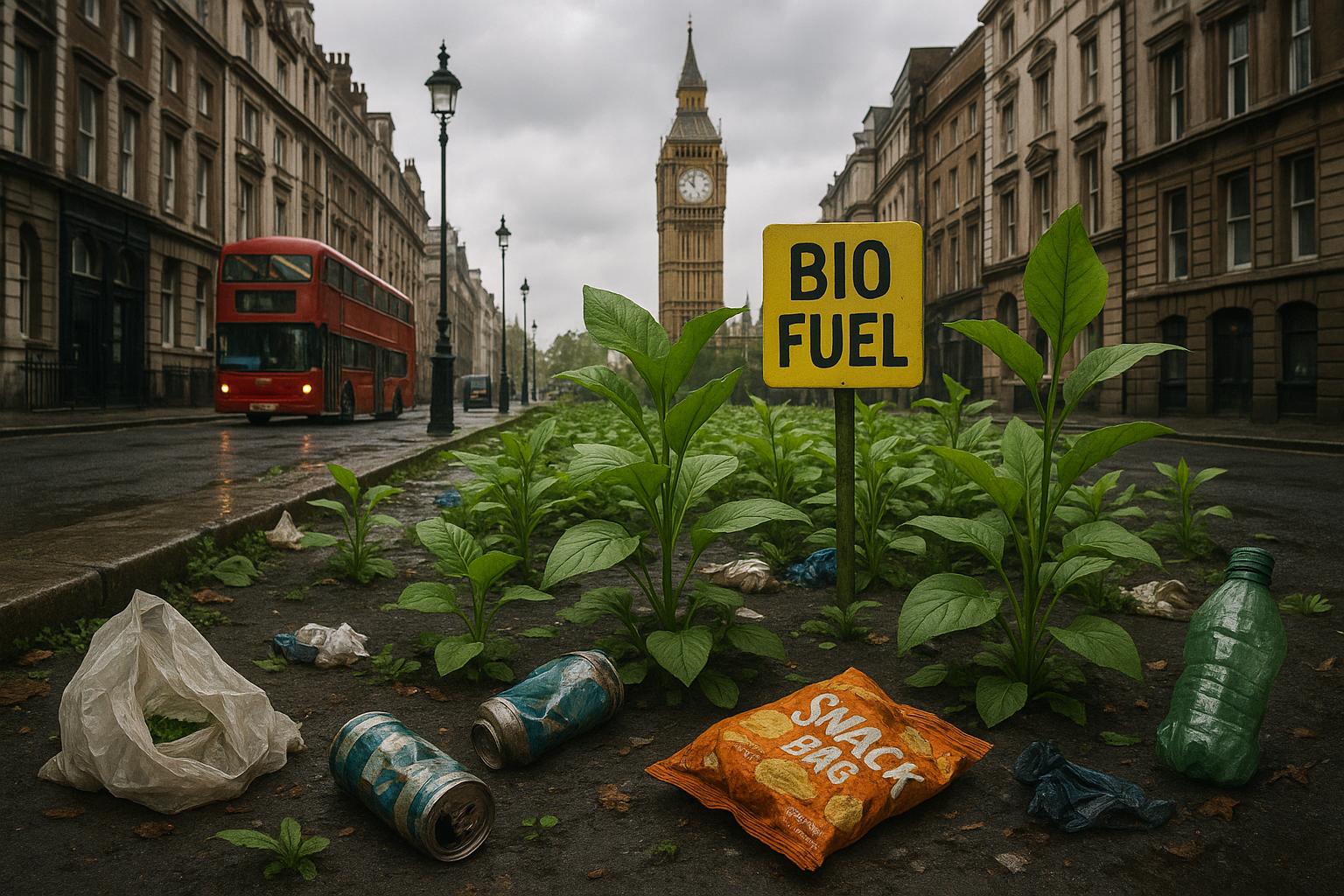London's financial district is steering considerable attention and capital towards an emerging and unconventional commodity: waste-based biofeedstocks. These materials, which include used cooking oil, municipal solid waste, animal fats, and agricultural residues, are increasingly recognised as pivotal resources in the global push for renewable fuel production. This financial commitment is far from a passing trend; it reflects a strategic realignment driven by pressing environmental imperatives, evolving regulatory frameworks, and attractive economic incentives.
The transformation of organic waste into biofuels such as renewable diesel, Sustainable Aviation Fuel (SAF), and biogas presents a multi-faceted solution. By converting waste streams into energy, this sector significantly diminishes greenhouse gas emissions and reduces landfill pressures, embodying a circular economy where waste is reimagined as a valuable commodity. The policy environment has played a critical role in this shift. International agreements like the Paris Accord, alongside robust national mandates such as the UK’s Renewable Transport Fuel Obligation (RTFO), which targets nearly 19.5% renewable fuel content by 2030, have established a fertile ground for investment. The combination of these policies with increasing corporate commitments to Environmental, Social, and Governance (ESG) principles has accelerated funding and innovation in waste-to-fuel technologies like anaerobic digestion and hydrothermal liquefaction.
Leading industry players have emerged, including specialised biofuel producers and major oil companies diversifying into renewables. Firms such as Neste, the world’s foremost producer of renewable diesel and SAF primarily sourced from waste feedstocks, and Darling Ingredients, through its joint venture Diamond Green Diesel, are notable examples. Traditional oil giants like BP and Shell have also pivoted significantly. BP’s recent $10 million investment in WasteFuel, a California-based bio-methanol developer converting municipal and agricultural waste, highlights their strategic commitment to bioenergy as part of decarbonisation. Shell and TotalEnergies are similarly expanding their biofuels portfolios. This diversification benefits not only production companies but also waste management firms like Waste Management Inc., which is capturing landfill gases for renewable natural gas (RNG) production, illustrating the sector's integrated growth across the waste-to-energy supply chain.
London’s investment surge is also reflected in infrastructure expansion. Bioenergy Infrastructure Group (BIG), a London-based investor, acquired 20 biomass and anaerobic digestion facilities across the UK, including notable assets like the 20 MW Mersey Bioenergy plant. BIG’s portfolio expansion, including the 10 MW Hoddesdon waste-to-energy plant, underlines growing investor confidence and the scaling up of waste conversion capacity. Additionally, initiatives such as ReGenEarth’s £100 million Green Bond Programme support advanced biochar carbon removal technologies integrated with anaerobic digestion, reinforcing the sector’s environmental and economic potential.
The impact of these investments extends beyond environmental benefits. The waste-based biofeedstock boom disrupts traditional energy and waste management sectors, fostering competitive advantages for adaptable companies while challenging those reliant on fossil fuels or conventional waste incineration. Stakeholders must navigate feedstock supply risks, technological hurdles, and evolving regulatory frameworks, particularly as policies increasingly reward waste-derived fuels through mechanisms like “double credits” in the RTFO, and forthcoming EU mandates heighten SAF requirements.
On a broader scale, this movement advances global decarbonisation in sectors hard to electrify, such as aviation and heavy transport, where liquid biofuels remain critical. The International Energy Agency forecasts a more than 20% rise in advanced biofuel demand by 2030, with waste-derived fuels leading growth. London's financial backing supports not only increased processing infrastructure and supply chain integration but also innovative developments in carbon capture and storage linked with energy-from-waste facilities, positioning the UK as a pioneer in negative emissions technology.
Looking forward, the market outlook for waste-based biofeedstocks is robust. Forecasts predict the bio-feedstock market to nearly double by 2035, driven by expanding global demand for renewable fuels. This growth will necessitate intensified investments in logistics, processing technologies, and sustainable feedstock sourcing while maintaining strong verifiability and ESG accountability. The development of strategic circular economy hubs and diversified biorefineries will be key to scaling production and maximizing economic resilience.
London’s financial commitment represents more than capital movement; it signifies a fundamental reconceptualisation of waste as a strategic commodity essential to a sustainable energy future. The sector’s evolution demonstrates a successful melding of environmental responsibility with economic opportunity, fostering innovations that mitigate emissions, alleviate waste burdens, and support energy security. For investors and stakeholders, the critical factors to monitor include feedstock availability and diversification, regulatory consistency, technological advancements, and evolving market dynamics influenced by global trade and geopolitical considerations.
In essence, waste-based biofeedstocks stand as a transformative force in the renewable energy landscape, offering a pathway to decarbonize the most challenging sectors while embedding circular economy principles that extend far beyond energy production.
📌 Reference Map:
- Paragraph 1 – [1], [4]
- Paragraph 2 – [1], [2], [7]
- Paragraph 3 – [1], [3], [4], [5]
- Paragraph 4 – [1], [6]
- Paragraph 5 – [1], [3], [7]
- Paragraph 6 – [1]
- Paragraph 7 – [1]
Source: Noah Wire Services
